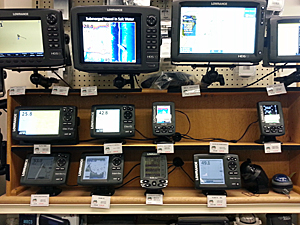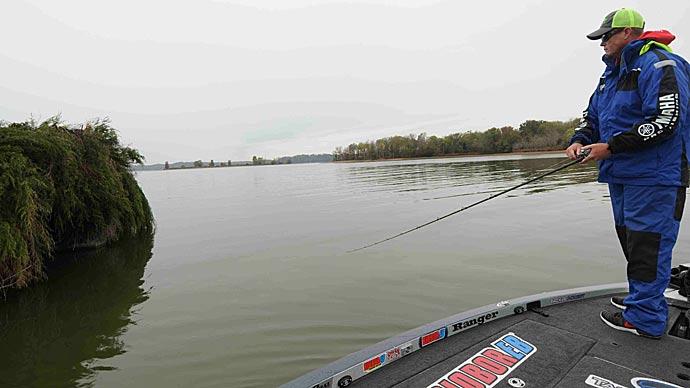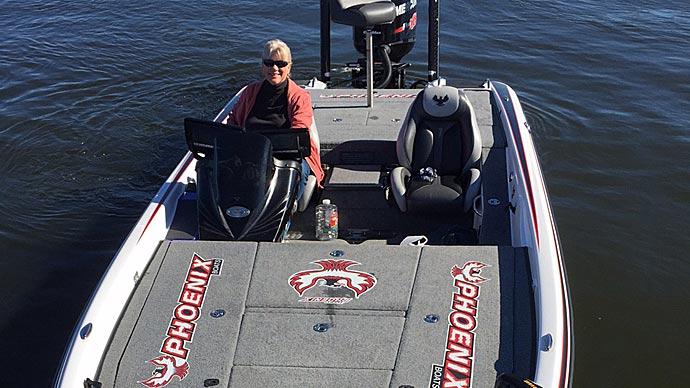
There is a wide array of electronic equipment available to bass anglers. Since positioning a boat can be a critical part of many presentations, it seems reasonable to start with trolling motors.
Things have changed dramatically over the last few years in what we now have as options for trolling motors. To begin with, weedless props are now standard on most major brands. There are also some unique designs of the heads that also aid in cutting through vegetation.
The issue of thrust, or power, is on an even playing field since all major brands provide you with plenty of push or pull. It is still up to you to ensure you get sufficient power to do the job correctly to match your fishing style. If you plan to fish in the wind and heavier waves, you need a much more significant margin of power than if you plan to avoid such confrontation. Fishing high waves require you use a sufficiently long shaft to give you the best chance of avoiding loss of power. This can occur when the motor cavitates between swells.
One major manufacturer, Minn Kota, recommends shaft lengths of 42 inches if the deck of your boat is from 16 to 22 inches from the water line. For boats with a 22- to a 28-inch gap between the deck and water line, they recommend a 48-inch shaft. As per the point made about rough water, you can add five inches to the water line measurement.
Brackets are now available that easily handle heavier thrust motors without any problem. However, if you want to get the whole story on a shock absorber or breakaway bracket, ask how it does in stumps.
To determine the durability of the various products, go to a repair station and see which ones have shafts replaced or straightened. If you are going to fish stumps, you will only sometimes hit a stump head-on. More often, it will be a side blow. A bracket that lets the motor collapse under the boat will reach a point where the shock absorber effect stops.
The Minn Kota folks have upped the ante in design to meet these problems by offering a 360-degree breakaway bracket that automatically reverts to the original position. They have also developed a composite shaft that absorbs impact and survives. Folks in repair shops I have talked to claim not to have had any of these in for repairs.
The choice is yours on foot or hand control, but one of the old concerns about foot-controlled motors has been dramatically improved. Both MotorGuide and Minn Kota offer steering-enhanced models. The Minn Kota version consists of an autopilot that is reported to hold any course within two degrees, correcting for wind, waves, and current. MotorGuide has its space-age version in the laser series, allowing wireless direction control from either a special footpad or hand-held control. Trolling motors are a significant investment. Shop wisely and ensure you get answers to all your questions before buying.
The other major factor in getting the most practical use from your trolling motor is batteries. Invest in the more powerful marine batteries if you put in a long day with heavy use.
A depth finder is the second most important electronic device to assist you in bass fishing. The same technology that has allowed the widespread use of cell phones has permitted the size reduction in electronic graphs. It has also increased the number of functions available to fishermen.
When purchasing a depth finder, you can find everything from cheaper units with limited functions to products with extensive computer capabilities. Fortunately, even the lower-priced units do an excellent job tracking the bottom and marking structure and fish.
Again, you need to select this product with your fishing in mind. You can choose the model that has the options you need. As you step up in price, with both Humminbird and Lowrance, you also get units with more pixels. These little squares pass along the screen from left to right to build the image. More pixels bring sharper detail to the screen.
Another option, or feature, on the higher dollar units, are dual and tri-beam transducers. These allow you to see three to five times what you could see with single crystal transducers.
The companies usually offer suggestions for the best positioning of the transducer with an emphasis on placing it outside of the hull. If the boat doesn't have a second floor, that will work at all but at the highest speeds. The position is critical, and either a dealer who knows where the transducer should be placed should seat it for you, or you will have to move it around until you find the best read. The transducer can be fixed to the floor with epoxy, or you can get adequate function if it is wedged in place and the face is covered with a standard layer of water.
By the way, make sure it's waterproof when you pay what even a basic finder costs. If you see the term water resistant, run. I had one of those creatures and got to where I had to put my rain suit on it instead of myself.
What does the future hold for depth finders? I asked Bill Easley, director of western sales for Humminbird.
"Additional refinements in technology will help us continue to add options in the future," said Easley. "The industry is working on forward-looking and forward-scanning models which will use more complex crystal capabilities in the transducers and more processing ability in the units."
Some of this advanced technology combines depth direction and GPS determinant of location in one unit. The Global Positioning System (GPS), in combination with a depth finder, offers a powerful tool, according to Easley. Anglers can access the accurate and rapid location of the desired waypoint.
One of the problems with older GPS units was the limitation placed on the accuracy you could obtain due to the military degradation of satellite signals. The units receiving scrambled signals would locate within 100 meters or so. Units made after 2006 offer differential GPS, which means data from beacons help to overcome the scramble effect and allow the accuracy of location well within 10 meters.
If you plan to purchase a portable unit that operates off a battery, you should determine if the loss of power means loss of data.
While many new GPS units are more streamlined with fewer buttons, you will still have to commit effort to use them most effectively. Fortunately, these units are improving in function and becoming more user-friendly due to computer-enhanced menus that walk you through the various steps.
The idea of a depth finder/GPS unit has obvious immediate use for bass fishermen in that if you know the level fluctuations in a given lake, you can play off the depth to more quickly get to the general area of the desired way point.
The primary electronic accessories we use today as anglers have become more reliable and offer various operation choices. It's still sound advice to ask fellow anglers about the products they're using before investing.




